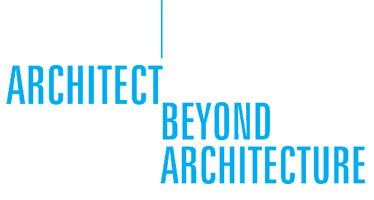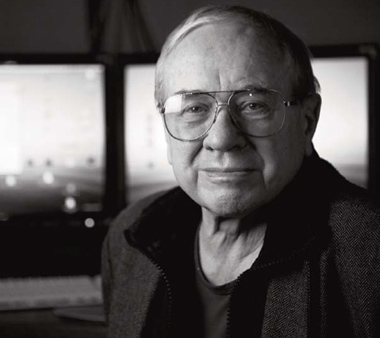
 |
|
|---|---|
He was born and brought up in Krakow in the first half of the 20th
century. He passed his A levels at the B. Nowodworski State Lyceum
in Krakow. He studied architecture at the Faculty of Architecture of
the Krakow University of Technology in the years 1949–55 (obtaining
the diploma and master’s degree in architecture). He worked as an architect holding the post of a district architect (1953) and then dealt with conservation of monuments and worked in design offices (1955–1958). Thereafter, he went to study at the Department of Film and TV Directing of the Higher State Film, Television and Theatre School in Łódź in 1958–1962 (obtaining the degree of Master of Arts). He worked as the film and TV director: 1963–74 – as Main Director of the Krakow Local Television, 1974–85 – the Main Director of the Polish National Television (TVP) in Warsaw, 1985–87 – as director of the Television Theatre Stage, 1987–2004 – as producer and director of the Polish Television; as the chairman of the Main Qualification Committee for Television-related Professions he took part in 8 juries of various international TV festivals. Stefan Szlachtycz made over 200 full-time TV programmes of all genres: theatrical, entertainment, educational, feature, documentary and music (ballet) films. For most of his films he wrote scripts himself. Mr Szlachtycz received many Polish and foreign awards including the Star of Polish Television Award in 2002 commemorating the 50th anniversary of the TVP. He also made radio dramas for the Polish Radio, staged theatre productions, including opera performances. He occasionally works as a set and stage designer in film, theatre and TV. He is also interested in commercial design. Looking back at my marriage with architecture (unrequited love, I am afraid), I most cherish the courting time so to say i.e. the time of my studies. Those were the times of the most bleak Stalinist regime but I was twenty then and feeling gloomy was not my immediate concern. I got accepted into the Nowodworski Lyceum together with two of my friends: Mrożek and Smólski. We were lucky to have pre-war i.e. real professors as the Communist system was then only starting to eradicate them. I was in the same year with one of the most efficient regime activists. His name was Janusz Ratajczak and he simply worshipped Feliks Dzierżyński. I became one of his victims because of blue jeans I wore. The studies were divided into two stages, the lower for engineers and the higher for a master’s degree. In order to apply to the M.A course one was evaluated for his or hers ideological attitude by Janusz Ratajczak. I was a double sinner in this respect: I had my hair crew-cut at the Jusięga barber’s in Warszawska street and I wore those trousers... By the way, the word “jeans”was not yet known. The first people in Krakow to wear them were Adam Dworski and Wojtek Plewiński, architects as well, and I had a bad luck in being the third. The punishment I got for “the American style of life” was a compulsory work assignment in Opatów Kielecki. I have no regrets, however, because I got to know the life of the Polish province. The main task of the district architect at that time was to supervise the building of cooperative farms. I passed the test with flying colours and although I was not a member of the Party, I got accepted on the M.A course. Our pack of the three soon broke, Mrożek dropped out, Smólski was a year higher than I, but I found a new friend who was also repeating the year – Bohdan Paczowski, one of my friends who did become a real architect and who designed buildings. Another of my friends, Janusz Majewski always knew that he wanted to become a film director. I did not. But fate had something to say here. I was to prepare my diploma design under the supervision of professor Zbigniew Kupiec who simply made me choose theatre as the subject of my work. Funny enough, it was to be located in the Krzemionki area, exactly at the place where the first building of the Krakow TV was erected and where – as a director – I was to stage the largest number of the TV theatre productions. In the meantime, as an architect with a degree I had to put my knowledge into practice, and I embraced the opportunity with enthusiasm. Straight after graduation I had the time of my life as the construction site manager, during the rebuilding of the Niedzica Castle. After that I did some work in design offices of all sorts, odd jobs for the Voivodship Conservator of Monuments, feeling a growing certainty that I would not become one of the architects of the so called ”socialist realism”. My first lapse was the job of... the graphic editor of the “Tygodnik Powszechny” weekly magazine together with Staszek Kasprzysiak, who was also a “renegade”. At that time Majewski appeared out of the blue and offered me an acting engagement in his school film Rondo / Roundabout and together with Mrożek we started practising... tango! We both profited from this experience. Later he wrote a play Tango and I was accepted to the Film School. Those were the days when I really learned how to live a real life, it was a better version of my previous studies. How does architecture relate to all this? Well, I made a living taking odd jobs at the local (Łódź) architects’ offices and later I made ends meet making film-credits which were hand-crafted at the time and I had a penchant – yes, from my architectural studies – for the art of calligraphy. The teachers at the Film School (we never said “Filmówka”) preferred the graduates of ASP (Academy of Fine Arts) to other ones as potential directors. We convinced them of the falsity of their bias as there was quite a large bunch of us , architects, there. If architecture is perceived as the art of organization of three-dimensional space, then a film is a transposition of three-dimensional reality into two-dimensional space of the screen in the nutshell. Painters work in two dimensions having practical problems with the third one, the actual construction of it, so they remain “visionaries”. Film making: a story-script-screenplay is the process that is parallel to the one of completion of a building. Even the Polish term “kolaudacja” [validation, approval] has been transferred to cinematography from the language of the art of building. And television? A total disappointment! Instead of becoming the youngest Muse it has become an indecent mistress of politics... Have I ever stopped being an architect? Not at all! Every staging needs a set design, so even if did not do it myself, I always had the last word. I practice advertising, always subordinating it to the discipline of composition. The only thing is, my relationship it is probably not love, but a routine or even a rut of a divorced man who is quite aptly called in Polish a “salvaged bachelor...” Stefan Szlachtycz Warsaw, March 2010 More at www.fimpolski.pl/fp/index.php/414051 |
 photo by Michał Mutor/Agencja Gazeta |

Copyright by Konrad Glos, Rafal Zub 2010




